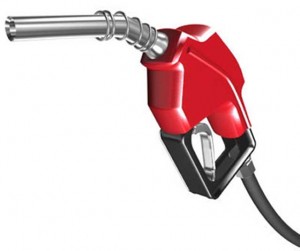Facing the prospect of opposition from the new, Republican-controlled House of Representatives, federal regulators recently announced a delay in setting out proposed new fuel economy standards – which many have expected to push as high as 62 mpg by 2025.
But at least one challenge to raising the numbers appears to have been overcome. The Department of Transportation, the Environmental Protection Agency – and the State of California – have all agreed they will speak with one voice, rather than releasing their own proposals and then trying to work out a very public compromise.
Whatever the number, the government agencies involved in updating the Corporate Average Fuel Economy, or CAFE, standard plan to make their unified announcement by September 1.
“By working together with EPA and the California Air Resources Board to develop standards for the next generation of clean cars, we can set a standard that works for automakers across the country,” said Transportation Secretary Ray LaHood.
The CAFE standard is currently migrating to 34.1 mpg by 2016. That standard, announced last April, was hammered out after some bitter feuding – not just the traditional industry-government bickering, but within various regulatory circles.
Decades ago, Congress gave smog-choked California the right to set its own emissions standards, which have typically been much more stringent than those mandated by the EPA. But the California Air Resources Board began pushing for rules that would expand its authority beyond traditional pollutants, like NOx, and take in global warming CO2. That was expected to result in a separate California mileage standard – since fuel consumption is indelibly linked to production of carbon dioxide. A late solution was hammered out by the Obama Administration before CARB acted.
Air Resources Board spokesman Stanley Young told the media outlet Green House that since “We are sharing the same set of data,” a common conclusion on future fuel economy standards should be reachable.
In regulatory circles, certainly. It remains to be seen whether the auto industry will willingly go along, as it ultimately did with the 2016 mandate.
A number in the range of 62 mpg “would have diminishing returns,” argues David Cole, director-emeritus of the Center for Automotive Research, in Ann Arbor, MI.
Critics note that bringing fuel economy up from the old 27 to the new 34 mpg target has a measurable benefit. Saving 115 gallons a year – on average, for motorists driving 15,000 miles a year in a vehicle getting either 27 or 34 mpg – would save about $460 annually, or $5,000 over the life of a typical vehicle.
Bumping the figure up to 62 would save 200 more gallons a year, but estimates suggest the additional cost of fuel-saving technology would far exceed the financial benefit.
Environmentalists counter that such an analysis doesn’t factor in such issues as global warming. Other proponents argue that there are other benefits, including a reduction in the U.S. dependence upon foreign oil.
Whether regulators will feel pressured to pull back on earlier fuel economy proposals, especially with a conservative, pro-business Capitol Hill, remains to be seen, though in traditional Washington fashion, trial balloons will be floating over the nation’s capital well before the September deadline.

